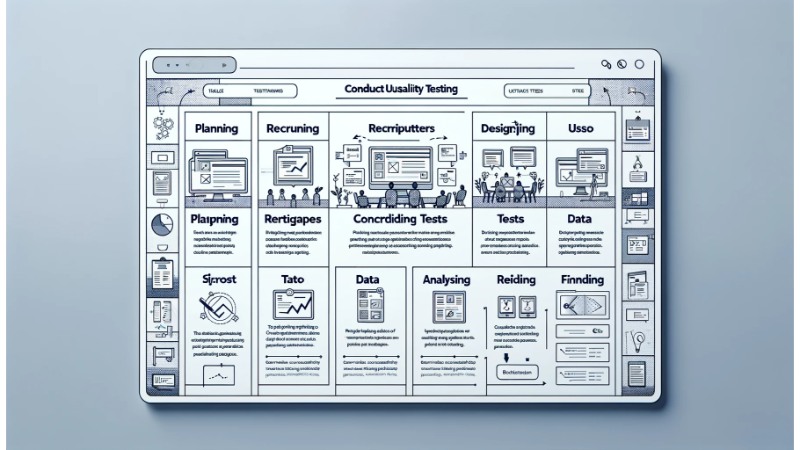Software Usability Testing

Usability testing is a crucial part of the software development process, ensuring that the product not only functions well but is also user-friendly. This testing helps identify issues related to interface design, user experience, and accessibility. Thus, it plays a key role in enhancing product quality and customer satisfaction.
Benefits of Usability Testing
Improving User Experience
One of the main goals of usability testing is to improve the user experience. When users find software easy and convenient to use, they are more likely to use the product more frequently and rate it higher.
Reducing Errors and Issues
Usability testing helps detect errors and design issues early. This reduces the costs associated with fixing bugs post-release and enhances the overall quality of the software.
 Increasing Competitiveness
Increasing Competitiveness
Software with good usability has a competitive edge in the market. Users tend to choose products that provide a better experience, so investing in usability testing can provide a significant advantage for businesses.
Usability Testing Methods
Observing Real Users
This method involves inviting a group of real users to use the software for a certain period. By observing and recording their behaviors and feedback, developers can gain a clearer understanding of the issues users face.
Surveys and Interviews
Surveys and interviews are methods of collecting feedback from users after they have experienced the software. This approach helps gather detailed and insightful opinions on areas that need improvement.
 Heuristic Evaluation
Heuristic Evaluation
Heuristic evaluation is a method where experts evaluate the software based on a list of user interface design principles. This approach helps quickly identify design issues without relying on real users.
Steps to Conduct Usability Testing
 Define Objectives: First, clearly define the objectives of the usability testing. This includes understanding what you want to learn and improve.
Define Objectives: First, clearly define the objectives of the usability testing. This includes understanding what you want to learn and improve.
Choose Methods: Select the most appropriate testing methods for your objectives. Combining multiple methods can yield optimal results.
Prepare Test Scenarios: Create specific software usage scenarios that users will perform during the testing process.
Conduct Testing: Invite users to participate and perform the tests according to the prepared scenarios. Record all their feedback and behaviors.
Analyze Results: Analyze the collected data to identify issues and suggest improvement solutions.
Improve and Retest: Implement the necessary changes based on the testing results and retest to ensure the issues have been resolved.
Conclusion
Usability testing is an essential process to ensure that your software not only functions well but also provides an excellent user experience. Investing in usability testing not only helps improve product quality but also enhances customer satisfaction and the competitiveness of your business in the market. Start implementing usability testing today to deliver better products to your users.


